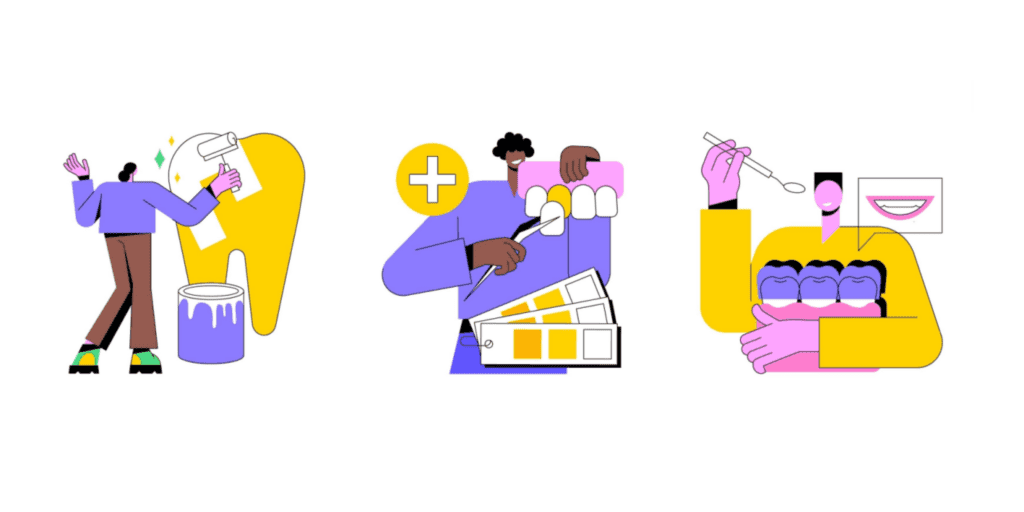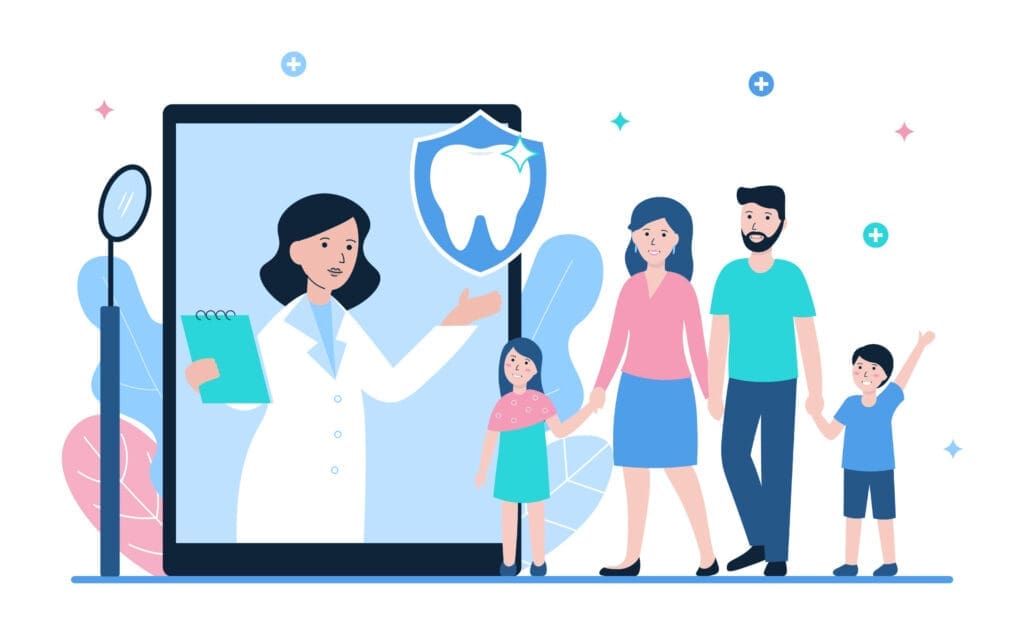Last updated on January 26th, 2021 at 12:21 pm
 After six (and now seven) articles on the subject; are you sick of hearing about how to fix new patient problems yet?
After six (and now seven) articles on the subject; are you sick of hearing about how to fix new patient problems yet?
On a serious note though, if you’ve stuck with me for the last six articles – I hope you’ve found them helpful. You can find these earlier issues here: Part I, Part II, Part III, Part IV, Part V and Part VI.
Now, if you’ve read any of the past issues, you know that I’ve covered how to solve the three most common new patient related issues I’ve encountered with dentists. These issues or “scenarios” as I’ve called them are:
Scenario 1: Your practice has never consistently attracted an adequate number of new patients.
Scenario 2: Your office used to get more new patients and they’ve dropped off – suddenly or over time.
Scenario 3: You’re getting a good number of new patients, but you’re not seeing the expected results in your collections or bottom line.
Scenario’s 1 & 2 have been covered (at length) over my last six posts. In this issue, we’ll wrap up with Scenario 3…
Scenario 3: You’re getting a good number of new patients, but you’re not seeing the expected results in your collections or bottom line.
MORE NEW PATIENTS = MORE COLLECTIONS & PROFITABILITY – RIGHT?
The majority of dentists looking to boost collections and productivity zero in on new patients as the most “logical” solution. And while it doesn’t always work out that way, it’s not an illogical assumption. After all, you’re collecting $30,000 a month with 10 new patients. If you were to see twenty or more, you would expect a commensurate increase in income.
Now, as I said, it unfortunately does not always work out that way. For that matter, I would estimate that over 50% of the dentists I’ve spoken to who thought more new patients were going to solve collections found themselves disappointed!
And to make myself clear, I’m not saying that you shouldn’t get more new patients. You should. I’m saying that more new patients (without the right internal set-up) will not necessarily lead to a commensurate increase in collections.
So, if new patient flow is good but you’re not seeing the benefit on your bottom line – what could be the problem?
Well, let’s have a look.
The Problems
This problem (good amount of new patients – but not collecting what you should) normally leads back to one (or more) of four issues:
1. Customer service is poor.
2. You have no established pattern to “sell” treatment plans to new patients
3. You need to improve your ability to present treatment.
4. Your schedule is overloaded.
Let’s look at each (along with it’s solution) in turn:
1. Customer service is poor.
Imagine you hear about a new restaurant – via word of mouth or TV, the mail, whatever. You make reservations and go with your significant other for a night out. Your experience is as follows:
a. You wait an hour for your “reserved” table.
b. The hostess/maître’d is dismissive or rude.
c. Your server is rude and inattentive.
d. The service is slow.
e. Your food comes out at different times (you get your main course 20 minutes before your spouse).
f. The restroom is filthy.
g. Your silverware is dirty.
h. The food is not very good and
i. The bill is wrong and needs to be clarified at the end…
You going back? Nope. For that matter, just one or two of those issues may have turned you off enough to never go back.
Customer service is a BIG deal. According to Walker Research, a customer intelligence consulting firm in Indianapolis, IN:
“By 2020, customer experience will overtake price and product as the key brand differentiater.”
There are a lot of dentists. What makes you stand out? What will make patients, especially new ones, want to stay?
Obviously clinical excellence is right there at the top. But right underneath that, we have customer service.
You spend a lot of money to get a new patient. Why waste them with an inattentive front desk, poor billing/accounting or scheduling mistakes? For that matter, it can get so bad that even clinical excellence can’t overcome these issues. Especially if that patient is blown off before they have a chance to experience your clinical excellence via dental treatment!
We also have another factor. You’ve may have heard the idea/saying that a person who is dissatisfied will tell six people, while a happy person tells two or three.
So, you could (with bad customer service) theoretically market yourself into oblivion! Drive enough people in, don’t satisfy them, they each tell six people and then via word of mouth have it boomerang back on you in a most terrible way.
 And the worst part of all of this, is good customer service is EASY. Assuming you:
And the worst part of all of this, is good customer service is EASY. Assuming you:
a. Hire productive, customer-oriented people.
b. These people are trained to know what they are doing and
c. You have efficient, established organizational patterns in your practice that are well laid out and easy to follow.
To start, we all have an idea of how we’d like to be treated. Is that happening in your office? Also, it takes looking a bit. Walk into your office as if you’re a new patient. Clear your mind and see what they would see. Is it clean? Is your receptionist welcoming and cheerful? Are you getting a lot of patient complaints about customer service related issues?
Ultimately if you want to really get a handle on all of this, we cover how to establish excellent customer service (and more) on the MGE Power Program. My advice – get a head start on 2020!
2. You have no established pattern to “sell” treatment plans to new patients
Presenting treatment (or really “sales” no matter how much you dislike the word), breaks down into two aspects:
a. Your actual skill in treatment presentation (we’ll cover that in a minute)
b. An established pattern in your organization to make treatment acceptance an easy process.
Let’s focus on this pattern for a minute.
 If you think about it, out of necessity, you develop a scheduling pattern policy for delivering dental treatment. You have to. I would bet, even if you don’t have it in writing, that there is policy on what to do if I called your office – right now – and said I was a new patient with a toothache. You’ve thought through “how” you would handle me – i.e. when to schedule, where to schedule, etc.
If you think about it, out of necessity, you develop a scheduling pattern policy for delivering dental treatment. You have to. I would bet, even if you don’t have it in writing, that there is policy on what to do if I called your office – right now – and said I was a new patient with a toothache. You’ve thought through “how” you would handle me – i.e. when to schedule, where to schedule, etc.
Have you figured out the same types of patters for presenting treatment? And not just for new patients, but also for patients of record?
Let me give you an example: You do a new patient exam and find that the patient needs about $5,000 worth of work. You have five minutes until your next appointment. What do you do?
Most would plow right along and hurriedly present the treatment plan…only to hear “I’ll think about it.” And add the patient’s name to the “Incomplete Treatment List.”
Let me give you a hint here – this failure to “close” the patient on doing their treatment has NOTHING to do with sales ability or lack thereof. Even the best sales person would have a hard time “closing” a patient for a $5,000 treatment plan in five minutes!
Or how about if you have the time, but the patient balks when it comes to finances? What do you do? In most cases, people do the same thing that happened above: Add the patient to the “Incomplete Treatment List.”
Simple nuances, some as small as how and when you pass a patient over to your Treatment Coordinator/Financial Secretary to make financial arrangements can have a huge impact on treatment plan acceptance.
All in all, if you have problems with these patterns, you’ll have trouble translating more new patients (customers) into more revenues.
Some simple solutions would be establishing these patterns in your office based on experience as to what has (and has not) worked. Make these patterns and procedures policy and insist it is followed. You might have a “brainstorming” session with your staff to work on this a bit, come up with ideas and implement them.
Of course, if you really want to take control of this area, I’d recommend the MGE Communication and Sales Seminars.
And with that, I’ve run out of time for this week. Next week, we’ll have the final post in this series (it’s finally going to be over!) on how to handle Scenario 3.
If you have any questions between now and then, feel free to email me at sabrib@mgeonline.com or call me at (800) 640-1140.
Until then!



One Response to “How I Fix New Patient Problems – Part VII”